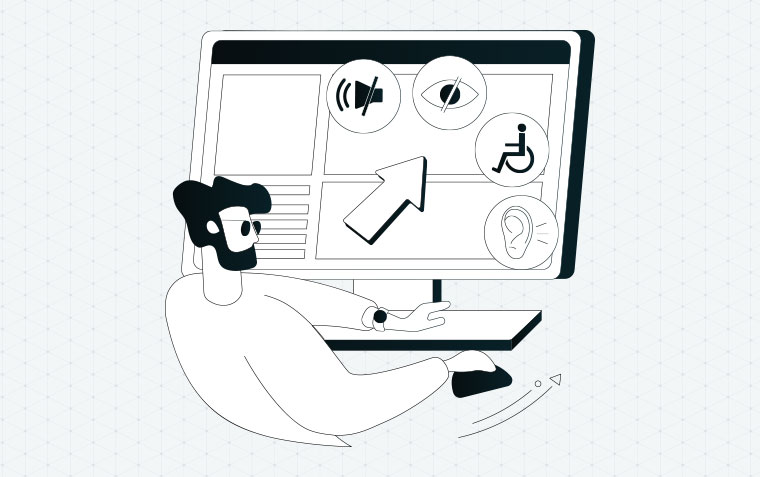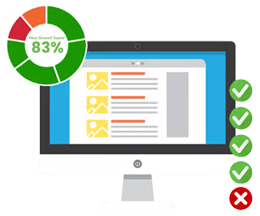The Importance of the Favicon
What is a Favicon?
Before we delve deeper into the importance of favicons in website design, let's first understand what exactly a favicon is. The term "favicon" is derived from "favorite icon." It refers to the small, square-shaped icon that appears in various places within a web browser. Most commonly, favicons are displayed in the browser tab next to the website's title, but they can also appear in bookmarks, history lists, and browser address bars.
Favicons are typically 16x16 pixels or 32x32 pixels in size and are saved in the ICO (Icon) format. However, modern browsers also support other image formats such as PNG and GIF for favicons. The favicon file is usually named "favicon.ico" and is placed in the root directory of the website, allowing browsers to locate and display it correctly.
The purpose of a favicon extends beyond mere decoration. It serves as a visual identifier for a website, representing the brand or website identity in a concise and recognizable manner. By incorporating unique elements such as logos, symbols, or distinct typography, a favicon helps users associate the small icon with a particular website or brand.
Creating a favicon involves designing a simple yet impactful graphic that captures the essence of your website or brand. While favicons are small in size, they are an essential part of a website's visual identity and should be given careful consideration during the design process.
Now that we have a clear understanding of what a favicon is, let's explore the significance of this seemingly modest element in website design.
A Small Detail with a Big Impact in Website Design
When it comes to website design, every element plays a crucial role in creating a seamless user experience. From captivating visuals to intuitive navigation, designers strive to ensure every detail is carefully considered. However, in the pursuit of perfection, one element often gets overlooked - the favicon. Despite its small size, the favicon holds immense importance in web design. In this article, we'll explore the significance of favicons and why they should never be underestimated.
Brand Recognition
In today's highly competitive online landscape, establishing brand recognition is vital for success. A favicon - a tiny icon displayed in the browser tab - provides a valuable opportunity to reinforce your brand identity. By incorporating your logo or a distinctive symbol into the favicon, you create a consistent visual representation that helps users identify your website among a sea of tabs. Consistency in branding is key, and a well-designed favicon contributes to building brand recall and trust.
Professionalism and Attention to Detail
A favicon might seem like a minor detail, but its presence (or absence) can make a significant impact on how your website is perceived by visitors. Including a favicon demonstrates professionalism and attention to detail, signalling that you have invested time and effort into creating a cohesive and polished user experience. It reflects positively on your brand, making users feel confident that they are engaging with a reputable and trustworthy website.
User Experience and Navigation
In the vast ocean of websites, users often find themselves juggling multiple tabs at once. A well-designed favicon can help users quickly locate and switch back to your site. It serves as a visual cue, aiding users in identifying your website amidst the cluttered browser interface. This small yet essential visual element enhances the overall user experience, enabling seamless navigation and reducing frustration. It adds a touch of convenience that visitors appreciate and encourages them to return to your site in the future.
Mobile and Bookmarking
With the rise of mobile browsing, favicons have become even more relevant. When users bookmark your website on their smartphones or tablets, the favicon appears alongside the saved link. This further strengthens your brand visibility on users' devices and creates a unified experience across various platforms. A visually appealing favicon in the bookmarks list can also make your website stand out and entice users to revisit.
Search Engine Optimisation (SEO)
While favicons themselves do not directly impact search engine rankings, they can indirectly contribute to your website's SEO efforts. A favicon adds a professional touch to your site's appearance in search engine results. When users see your favicon displayed next to your site's title and description, it helps reinforce your brand identity and increases the likelihood of click-throughs. As user engagement and click-through rates are crucial factors in search engine algorithms, a well-designed favicon can indirectly boost your website's visibility and organic traffic.
In Summary
In the vast realm of website design, even the smallest details hold significant importance. The favicon may be tiny, but its impact is anything but insignificant. By incorporating a well-designed favicon, you enhance brand recognition, add professionalism to your website, improve user experience, and contribute to your SEO efforts. So, the next time you embark on a website design project, remember to pay attention to this seemingly modest element that carries the potential to make a lasting impression on your visitors.
Web Ideas always includes a Favicon with every site we build - Want to know more? Please contact us.



